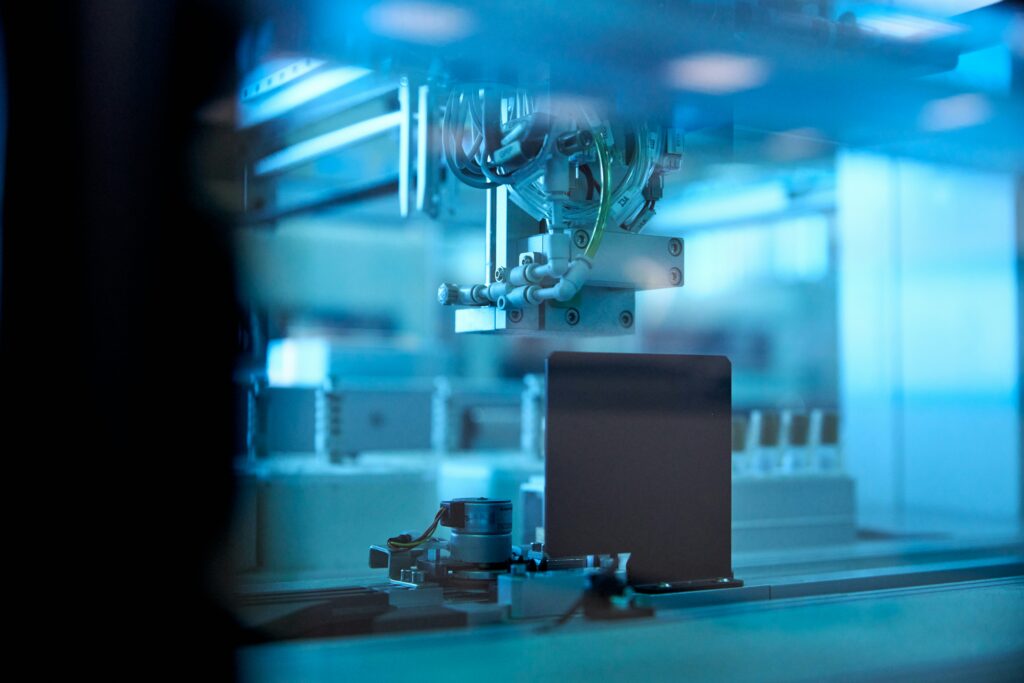In this article, you’ll discover over 90+ essential manufacturing industry statistics that are crucial for 2024.
Unlike many other statistics posts, every piece of data here is completely current.
If you need the most relevant and up-to-date manufacturing insights, this comprehensive list is for you.
- The market size of the US manufacturing industry is worth US$2.0tn in 2024. (Statista)
- 83% of manufacturers believe that smart factory solutions will revolutionize the manufacturing process within the next five years. (Deloitte)
- The addition of 5G technology is expected to unlock around $605 billion in revenue for manufacturing businesses through value addition. (Capgemini)
- In President Biden’s first year in office, 367,000 manufacturing jobs were added. (White House)
- 24% of manufacturers reported higher prices of raw materials compared to the prior month. (Reuters)
- Aftermarket services have increasingly become a valuable tool for manufacturers, offering 2.5 times greater operating margins than new equipment sales. (Deloitte)
- Manufacturers have generally noticed a steady improvement in delivery times, with the average delivery times for production materials reaching 87 days in 2023. (Deloitte)
- Every year, the forest products sector brings $300 billion to the US economy, accounting for 4% of the US manufacturing GDP. (USDA)
Wages for manufacturing workers who kept their jobs rose by 6%, while recruits experienced a 6.8% wage increase. (TIME)
Employment in the Manufacturing Industry
Employment trends in the manufacturing industry reveal significant growth and challenges. From increasing job numbers to evolving roles, understanding these trends is crucial for stakeholders. This section delves into key employment statistics, highlighting recent changes and future projections within the manufacturing workforce.
- As of January 2024, US manufacturing employment stands at nearly 13 million. (The Manufacturing Institute)
- The number of manufacturing establishments increased by more than 11% between Q1 2019 and Q2 2023. (The Manufacturing Institute)
- Construction spending in the manufacturing industry has nearly tripled since June 2020, reaching $225 billion in January 2024. (The Manufacturing Institute)
- By September 2023, almost 300 new clean technology, semiconductor, and electronics manufacturing facilities had been announced, driven by the IIJA, IRA, and CHIPS Act. (The Manufacturing Institute)
- These projects represent over $430 billion in investment and have resulted in more than 234,000 new jobs. (The Manufacturing Institute)
- There exists a potential need for 3.8 million net new employees in the manufacturing industry between 2024 and 2033. (The Manufacturing Institute)
- If the talent gap in the manufacturing industry is not addressed in the upcoming years, around 1.9 million jobs could go unfilled. (The Manufacturing Institute)
- The electric vehicle industry could create more than 150,000 jobs by 2030 in the U.S. (The Manufacturing Institute)
- By 2030, the number of logistics roles is expected to grow by nearly 30%. (The Manufacturing Institute)
- 70% of manufacturers are tackling the workforce crisis by establishing and expanding internal training programs. (The Manufacturing Institute)
- The number of apprentices in advanced manufacturing occupations rose to 59,500 in fiscal year 2023, nearly tripling the total from fiscal year 2021. (The Manufacturing Institute)
3d Printing and Manufacturing Industry
3D printing technology is revolutionizing the manufacturing sector, offering unprecedented speed, cost efficiency, and flexibility. As the market for additive manufacturing expands, businesses are leveraging this technology to streamline production processes, reduce lead times, and enhance product innovation, positioning themselves at the forefront of industrial advancements.
- The global additive manufacturing market is projected to grow to $50.8 billion by 2030 (Fast Company).
Mantle, a 3D printing tool builder company, helps manufacturers bring new products to life faster, cheaper, and more easily than ever before with its patented TrueShape™ metal 3D printing technology.
- The lead time for manufacturing of parts was reduced by over 70% by the use of their 3d printing technology. (Mantle).
- The manufacturing cost was reduced by over 65% by the use of their 3d printing technology. (Mantle).
You can find a detailed comparison in the table below.
| Comparison Area | Conventional Approach | Mantle |
| Time | 1 week | <2 days of printing and sintering time (46 hrs) |
| Component Cost | $1,875 | $624 for a single part, $225 each when printing four parts at the same time |
| Processing steps | – Fitting into mold base<br> – Fitting into mold base after insert creation<br> – Mold texturing | – Fitting into the mold base- (No texturing required) |
Technology Adoption in Manufacturing Industry

Technological advancements are transforming the manufacturing industry, driving efficiency, and fostering innovation. From IoT and AI to cloud computing and Industry 4.0, companies are increasingly integrating advanced technologies to optimize operations, enhance supply chain transparency, and stay competitive in a rapidly changing market environment.
- Over 70% of manufacturers have incorporated technologies such as data analytics and cloud computing into their processes. (Deloitte)
- 71% of companies consider Industry 4.0 an important trend for their organization. (Sandvik Coromant)
- By 2030, the Industry 4.0 sector is projected to generate sales of approximately 22 million 5G IoT units, primarily used in manufacturing applications. (McKinsey)
- By 2025, manufacturers and suppliers that implement Industry 4.0 in their operations will generate $37 trillion. (McKinsey)
- Digital supply chain solutions are being adopted by 76% of manufacturers to gain enhanced transparency. (Deloitte)
- Over the next two years, 53% of US manufacturers plan to increase workflow automation. (PwC)
- 92% of manufacturers are experimenting with or implementing at least one metaverse-related use case (Deloitte)
- Over 50% of manufacturers have fully adopted cloud-based platforms and IoT technologies. (PWC)
- IoT in Manufacturing Market is projected to grow at a CAGR of 14.50% from 2022 to 2032, reaching $USD 399.08 billion by 2026. (PR Newswire)
- 73% of manufacturers plan to invest in AI, robotics, and blockchain in the next two years. (PWC)
- The main objective of 59% of manufacturers to invest in technology is to drive growth. (PWC)
| Objectives | Percentage (%) |
| Drive growth | 59 |
| Gain competitive advantage | 49 |
| Optimize costs | 43 |
| Improve customer service | 35 |
| Increase resiliency | 29 |
| Explore innovations | 27 |
| Respond to government regulations | 18 |
You can find below the most used types of technologies adopted by Manufacturers.
| Technology | Adoption Rate (%) |
| Cloud-based common data platform | 53 |
| Internet of Things (IoT) / connected devices | 53 |
| Scan and intelligent data capture / OCR | 35 |
| Artificial intelligence (AI) / machine learning (ML) | 24 |
| RFID | 22 |
| Blockchain | 18 |
| Robotics / RPA | 16 |
Biggest challenges of manufacturers in digitizing their supply chain
- 47% find budget limitations the biggest hurdle for the adoption of technology and digitizing their supply chain. (PWC)
| Challenges | Percentage (%) |
| Budget constraints | 47 |
| Supply chain goals misalignment | 31 |
| Software and hardware limitations | 31 |
| Do not have the right infrastructure | 29 |
| Difficulty attracting talent | 25 |
| Lack of clear understanding | 20 |
- 55% of the manufacturing workspace needs more training to run the late technologies. (Fictiv)
Cybersecurity in Manufacturing Statistics
As manufacturing processes become more digitized, cybersecurity has emerged as a critical concern. Protecting sensitive data and ensuring the integrity of industrial systems are paramount. This section delves into the latest cybersecurity trends, threats, and strategies that manufacturers are adopting to safeguard their operations against escalating cyber threats.
- There has been a 71% (YOY) increase in cyberattacks that utilized stolen or compromised credentials. (IBM)
- 49% of US manufacturers believe that cyber-attacks are the biggest challenge their company will face in the next 1-2 years. (PwC)
- Cyber security is the number one priority with respect to your company’s operations for 48% of US manufacturers. (PwC)
- The Cybersecurity Manufacturing Innovation Institute (CyManII) plans to ensure the cybersecurity preparedness of 1 million manufacturing workers by 2026. (Thomasnet)
Ransomware in Manufacturing Industry
- Manufacturing is the top industry affected by ransomware in 2023 (Security Magazine)
- In 2023, 56% of manufacturing organizations experienced ransomware attacks. (Sophos)
- Ransomware attacks targeting the industrial sector have escalated to 905 in 2023, marking a 50% increase from the previous year. (CyberScoop)
- Only 27% of attacks could be stopped before data encryption, showing increasing adversary sophistication. (Sophos)
- Denso, a multi-billion dollar supplier to automotive companies such as Toyota, Mercedes-Benz, and Ford, disclosed the cyberattack in 2022. (Denso)
- Compromised credentials in the case of 27% of manufacturers and exploited vulnerabilities for 24% of manufacturers were the most common causes of attacks. (Sophos)
- 41% of attacks were attributed to malicious emails or phishing, showing susceptibility to email-based attacks. (Sophos)
- 34% of manufacturing organizations admitted to paying the ransom, while a significant 73% successfully utilized backups for data recovery. (Sophos)
- 40% of manufacturing organizations paid ransoms between $100,000-$999,999. (Sophos)
- The use of backups for data recovery from ransomware increased by 15 percentage points from the previous year. (Sophos)
Environment and Manufacturing Industry

The environmental impact of manufacturing is a pressing issue. Industries are seeking sustainable practices to reduce carbon footprints and comply with regulations. This section highlights initiatives, investments in clean technology, and the sector’s role in mitigating environmental pollution, contributing to a more sustainable future.
- Companies have been spending over $200 billion (20 times greater than the previous year) on clean technology and the semiconductor manufacturing industry since the passage of the IRA and Chips Act. (Financial Times)
- 75 manufacturing projects started that are worth at least $100 million each for plants producing semiconductors, electric vehicles, batteries, and renewable energy components. These projects are expected to create approximately 82,000 jobs. (Financial Times)
- The manufacturing industry is responsible for one-fifth of global carbon emissions. (World Economic Forum)
- Greenhouse gas emissions from the industrial sector made up 30% of total U.S. greenhouse gas emissions. (U.S. Environmental Protection Agency)
- The US Department of Energy has announced $22.5 million in funding to reduce carbon emissions from manufacturing. (Energy)
US GOVERNMENT INITIATIVE FOR ENVIRONMENTAL POLLUTION CAUSED MAINLY BY THE MANUFACTURING INDUSTRY
| Funding | Project |
| $8 billion | Funding for Regional Clean Hydrogen Hubs |
| $1 billion | Funding for a Clean Hydrogen Electrolysis Program |
| $500 million | Funding for Clean Hydrogen Manufacturing and Recycling Initiatives |
Source: White House
Women in Manufacturing
- Women accounted for 47% of the American workforce, with only 30% employed in manufacturing. (Census)
- In manufacturing, one out of every four management positions was held by women. (Census)
- On average, women in manufacturing earn 16% more than the national median annual income of employed women. (Census)
Flexibility Approach and Manufacturing Industry
- 46.8% of manufacturing companies are offering flexible scheduling to production workers. (The Manufacturing Institute)
- 63.5% of workers in the manufacturing industry indicated that they would seek more flexibility in their next role if they were to leave their current company. (The Manufacturing Institute)
